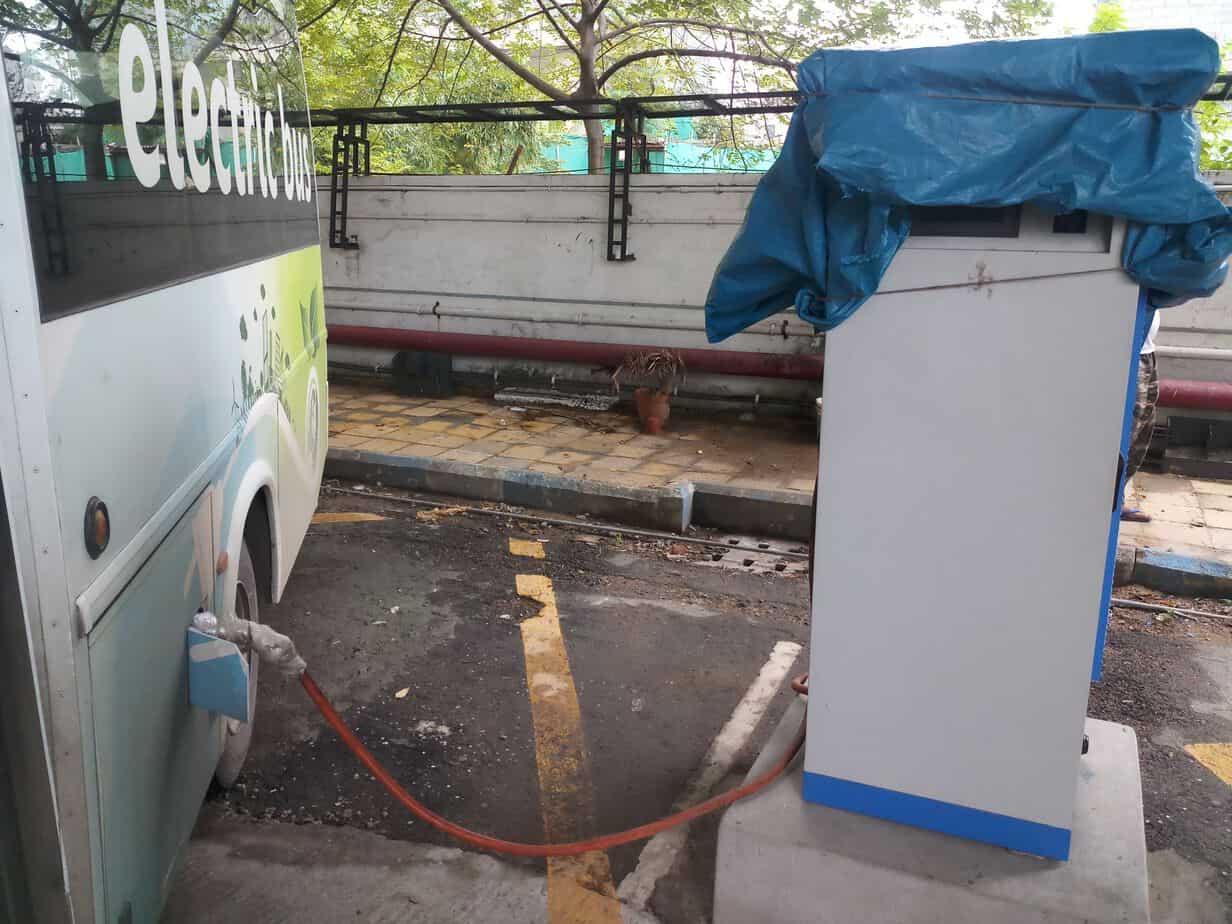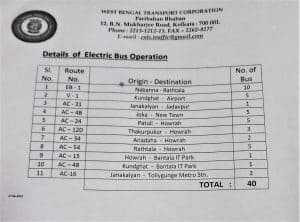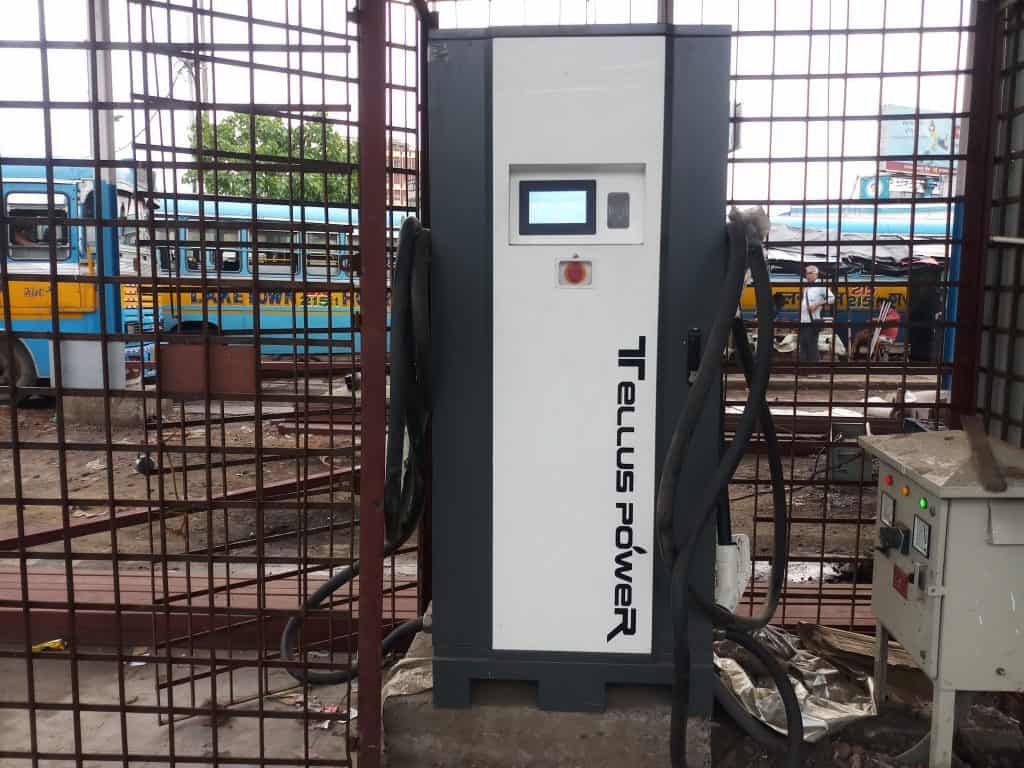25-year-old Aparajeeta Bhattacharya lives in New Town, a fast growing satellite city on the fringes of Kolkata. She works in a private company just four kilometres from her house within the New Town limits and regularly travels in the newly-introduced air-conditioned electric buses, which she says are convenient and also good for the environment.
“The electric buses are almost silent and also friendly for the environment, as they do not consume fossil fuel and emit toxic gases. We should all strive to do something for a better environment,” she says, adding that the fare is also reasonable at just Rs 10 for any distance travelled within New Town.
The government is currently running three such buses in New Town; with an aim to curb pollution and promote a ‘green city’ mission, the West Bengal Housing Infrastructure Development Corporation Limited (WBHIDCO) launched three electric buses through a collaboration with Coal India on May 1 2018. Commuters, however, feel they aren’t enough. “More buses should be introduced so that commuters do not have to wait longer at the bus stands,” said Aparajeeta.
Debashis Sen, Chairman of WBHIDCO, said that the concept of a green city began to gain ground after New Town got solar city status in 2011. “We had to give an undertaking to the Centre that we would lower the use of fossil fuel by 5% in the next five years,” he said; “Besides, introducing solar lights, we were also encouraging e-rickshaws. Under the same initiative, we decided to launch electric buses.”
The chairman conceded that it took some time because they had to look for sponsors. “Eventually, we got Coal India who decided to donate funds for the buses under their Corporate Social Responsibility (CSR) mandate,” said Sen adding that three more buses would soon be introduced on the roads.
Many like Aparajeeta now take the e-bus regularly. According to officials of WBHIDCO, over 1.3 lakh passengers have already used the service since it was introduced last year in New Town. The 32-seater white and green buses cover a total distance of 33 kilometres in New Town and have 49 stops in total. The buses were introduced on three routes, with the New Town Kolkata Development Authority (NKDA) bus stand serving as a base.
The three Eicher Skyline Pro E buses are powered by REVOLO technology, a platform that operates on a lower voltage and allows regeneration to have the maximum possible range with the smallest possible battery. KPIT, the service provider has installed charging stations and a workshop at NKDA bus depot, Shapoorji Bus Depot and Eco-urban space bus stands.
For many commuters used to traditional public buses in the state, the ride itself is a novelty. For one thing, these electric buses do not have a conductor and the driver gives a ticket to a passenger from a portable machine as they hop on. To reach the seats, the passengers have to go through a turnstile that remains locked with a bright red ‘X’ flashing on its side. The light turns green only after a passenger buys a ticket from the driver. There are seat belts, first-aid boxes, emergency exits and also surveillance cameras for passenger’s safety.
“Each bus has three CCTV cameras, one overlooking the seats behind the driver and another focussed on the front entrance. There is also a camera at the rear end of the bus to check the movement of approaching vehicles from behind. The images can be accessed by drivers at the press of a button on the monitor placed on the dashboard,” said Debashis, explaining the new technology deployed on these buses.
Bus drivers also find steering these vehicles hassle free and comfortable. “There is almost zero noise and the gears are automated, so driving is indeed comfortable. The passengers want the service to be more frequent though,” said Palash Pal, 32, a driver with WBHIDCO for the past one decade. Palash shared that three charging points are available at the bus depots presently. It takes around 7-8 hours for slow charge while fast charge can be done even in 90 minutes. The buses can run up to 177 kilometres once fully charged.
Senior officials said that the buses are being operated in two shifts, between 8 am and 12 noon and again between 5 pm and 9 pm. The break in between is used to charge the buses.
Passengers, especially women, have not only welcomed the e-buses but have also sought extension of the service hours, “The services are good, but they are irregular. It also becomes difficult to get buses at late hours in the evening and night. The government should introduce more such e-buses and ensure that working women can avail the service even at night hours, when it not safe to travel in cabs or other public transport,” said Rituparna Das, who works in a private firm at New Town.
The HIDCO chairman admitted the need but added that the service is far from profitable, “We have kept a minimum fare just to maintain a sort of discipline, otherwise the fare of Rs 10 does not cover our expenses,” Debashish said, “Our motto is not only to make public transport affordable for all, but also to spread awareness about electric buses that can play a major role in protecting the environment. Though we are not profitable, we are still introducing more buses, keeping benefits to the environment in mind.”
Experiments in Kolkata
Electric buses are no longer unique to New Town, though. The state government has also launched similar buses in the city. On February 20 2019, the West Bengal Transport Corporation (WBTC) rolled out 40 buses phase-wise to re-shape the urban mobility scene. The new 31-seater electric buses, bought under the FAME I scheme and operated/managed by the Corporation itself, run on 11 routes in the city.
The minimum fare is Rs 20 and goes up to Rs 40 at the maximum. According to officials, the transport department earned around Rs 39 lakh from e-buses in June 2019. The power consumption cost was Rs 18 lakh during the same period added to which there were infrastructure and manpower costs, but even so, they said that operations were profitable.
As in New Town, the e-buses have been well-received by Kolkata commuters too; officials say that occupancy depends upon the hour of the day. The buses run at full capacity during office hours while they also have a fair number of passengers during rest of the day.
What does pose a stumbling block, however, is inadequacy of charging points. A fully charged bus can travel up to 150 kilometres.
“The operation is smooth but often we face a problem in accessing charging points when urgently required. The frequent opening and closing of hydraulic gates and congestion on roads consume extra battery; It often becomes difficult to complete two full trips and we are forced to look for points where we can charge the battery,” said a bus driver, requesting anonymity.
Currently Greater Kolkata has 16 charging points at eight locations: Howrah, Newtown, Santragachi, Belghoria, Nonapukur, Thakurpukur, Gariahat.
When asked, transport officials said that a techno-feasibility assessment had been done prior to launch, but these issues are being noticed only after the complete launch of the service. Sensing these challenges, which they describe as teething problems that will soon be resolved, the transport department has recently curtailed some of the longer routes to make recharging easier.
“We have eight charging stations in the city presently but that number will soon be increased to ensure that recharging problems are addressed. We will be introducing another fleet of 40 buses,” said Sudeep Mitra, Joint Managing director, WBTC.
“There should be charging points every five kilometres at the most, otherwise it would be very difficult to run electric buses. The city has high vehicular density and often the buses have to wait for long periods of time at various traffic intersections. The hot and humid climate conditions also take a toll on the air-conditioners that consume more power from the battery,” pointed out Somendra Mohan Ghosh, an auto emission expert based in Kolkata.
Debashish Sen is extremely positive about the future of electric buses, “They have a huge potential and are alternatives to polluting vehicles in an age when controlling vehicular emissions is critical. The low fares as compared to other buses and comfortable rides would definitely encourage more and more people to opt for e-buses for their commute. Governments in some countries have made public transport free; while we do charge a fare, that is just nominal. E-buses are a positive and necessary step to create a clean environment,” he concluded.



